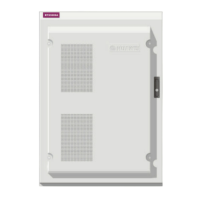
 Loading...
Loading...
Do you have a question about the Huawei Airbridge BTS3606A and is the answer not in the manual?
| Brand | Huawei |
|---|---|
| Model | Airbridge BTS3606A |
| Category | Accessories |
| Language | English |
Compares CDMA2000 1x and 1xEV-DO technologies, detailing key differences.
Introduces the hybrid network architecture comprising Base Station Subsystem/Access Network (BSS/AN) and Core Network (CN).
Details the BTS3606A's role and placement within the network and its application context.
Lists the key technical capabilities and specifications of the BTS3606A equipment.
Discusses the BTS3606A's capabilities for wide area coverage, including receiver sensitivity and transmit power.
Explains various networking interfaces, modes, and clock sources supported by the BTS.
Details system monitoring, data configuration, alarm processing, and security management functions.
Covers protection against environmental factors, wide operating temperature range, and robust power distribution.
Describes the compatibility design, flexible configuration, and smooth expansion capabilities of the BTS.
Lists related BTS products that enable seamless coverage across different urban, suburban, and rural areas.
Details the physical design, dimensions, and characteristics of the BTS3606A cabinet.
Illustrates the internal layout and component placement within the BTS3606A cabinet.
Outlines the main subsystems: baseband, Radio Frequency (RF), power supply, and antenna.
Lists and describes the various physical interfaces of the BTS3606A for connectivity.
Explains how power and rate control mechanisms are implemented for system capacity and service quality.
Details the different types of handoff (soft, softer, virtual soft, hard) for maintaining ongoing conversations.
Describes the radio configurations (RCs) and transmission combinations supported by the BTS.
Classifies and explains the forward and reverse channels for CDMA2000 1x and 1xEV-DO.
Explains the support for multi-carrier technology to increase system capacity.
Details the function of receiving diversity for enhancing signal reception and quality.
Describes the cell breathing function for adjusting coverage area and balancing system load.
Covers de-rating, component selection, thermal, and EMC design aspects for overall system reliability.
Details hardware reliability aspects including redundancy, input voltage protection, and fault monitoring.
Explains software reliability measures like resource checks, process monitoring, data integrity, and fault isolation.
Describes the local and remote maintenance systems, including the Local Maintenance Terminal (LMT) and M2000.
Covers security management, alarm management, loading, configuration, and equipment management functions.
Lists cabinet dimensions, weight, power consumption, and ambient environmental specifications.
Details the maximum sector carrier capacity and subscriber capacity of the BTS.
Provides detailed transmitter and receiver specifications across different frequency bands (450 MHz, 800 MHz, 1900 MHz).
Outlines specifications for connecting and cascading ODU3601C units for expanded coverage.
Lists general technical specifications and standards compliance for the BTS3606A.
Details Um interface specifications, including physical layer and MAC layer standards.
Lists Abis interface specifications, covering physical layer and protocol standards.
Covers compliance with lightning protection standards for equipment safety and surge protection.
Lists safety requirements and standards for information technology and electronic equipment operation.
Details electromagnetic compatibility (EMC) standards compliance for minimizing interference.
Lists environmental requirements and standards for equipment operation, storage, and transportation.
Provides definitions for abbreviations and acronyms used throughout the technical manual.